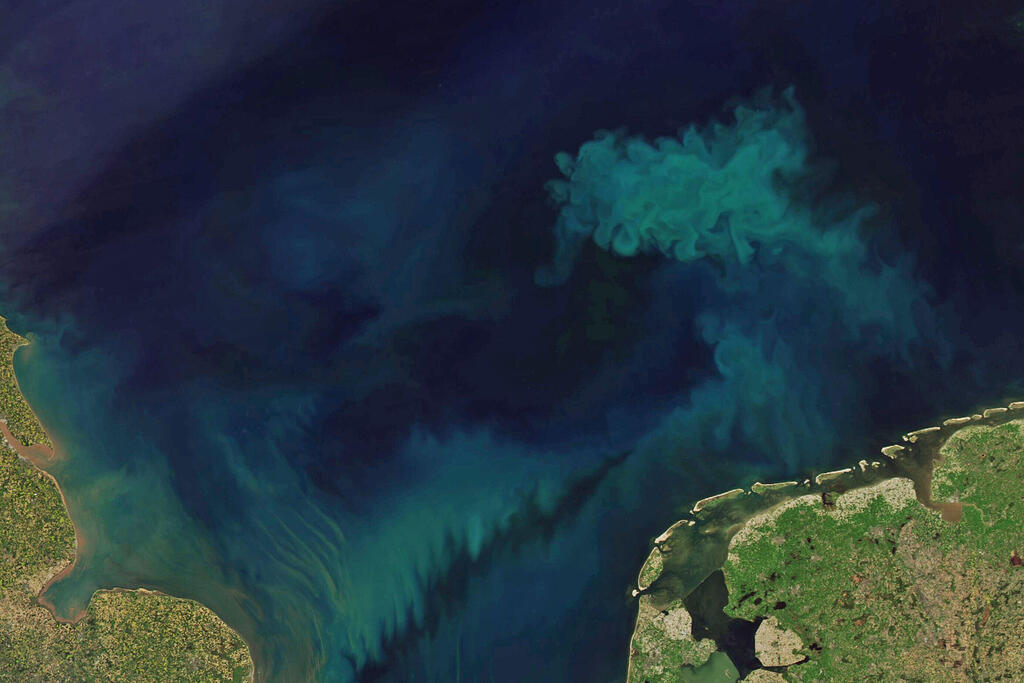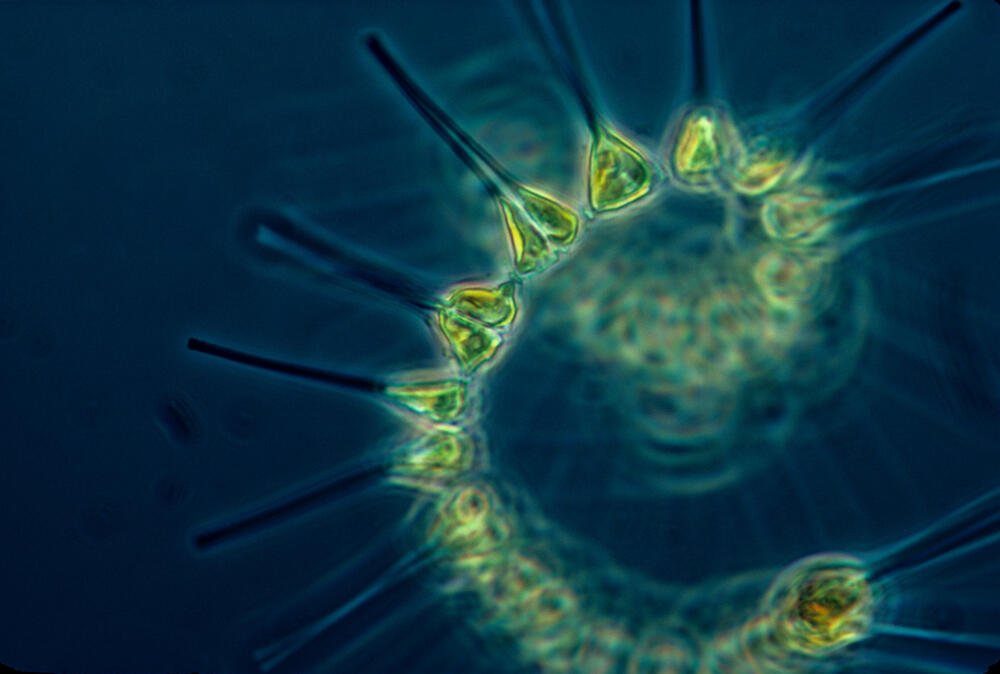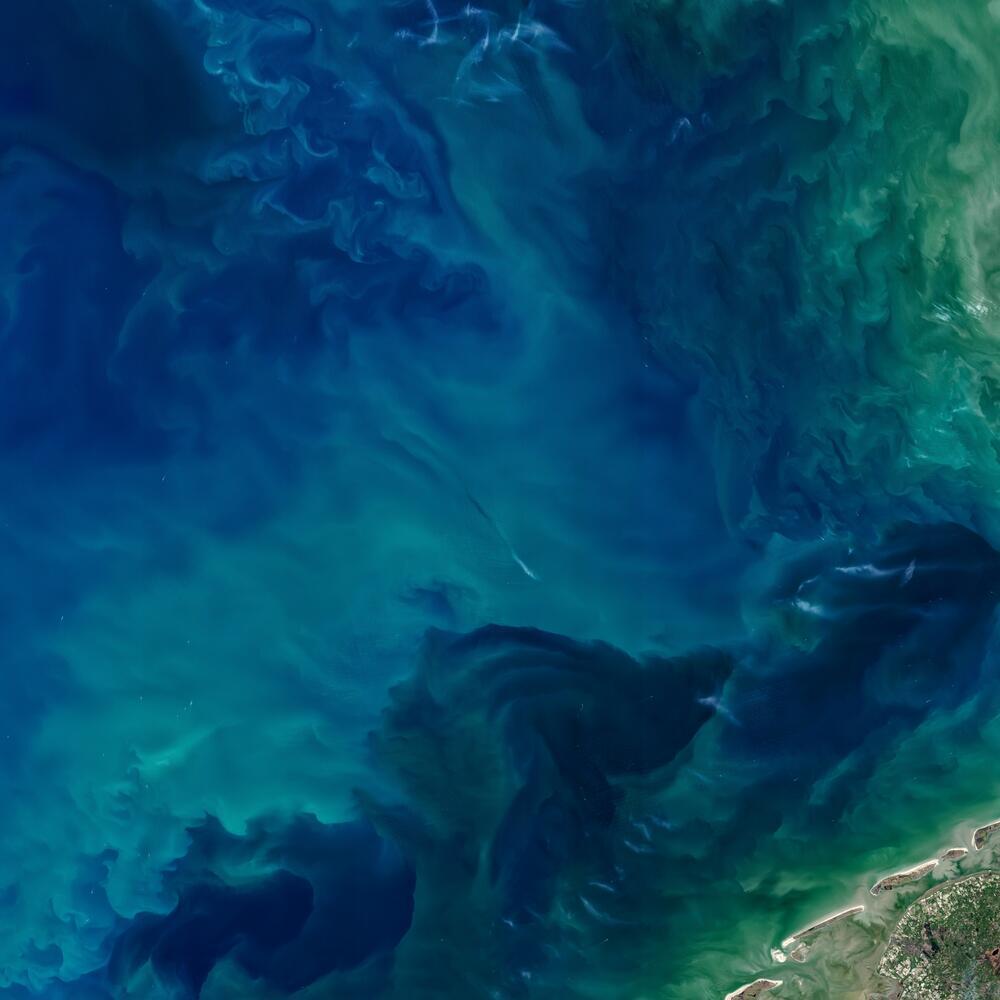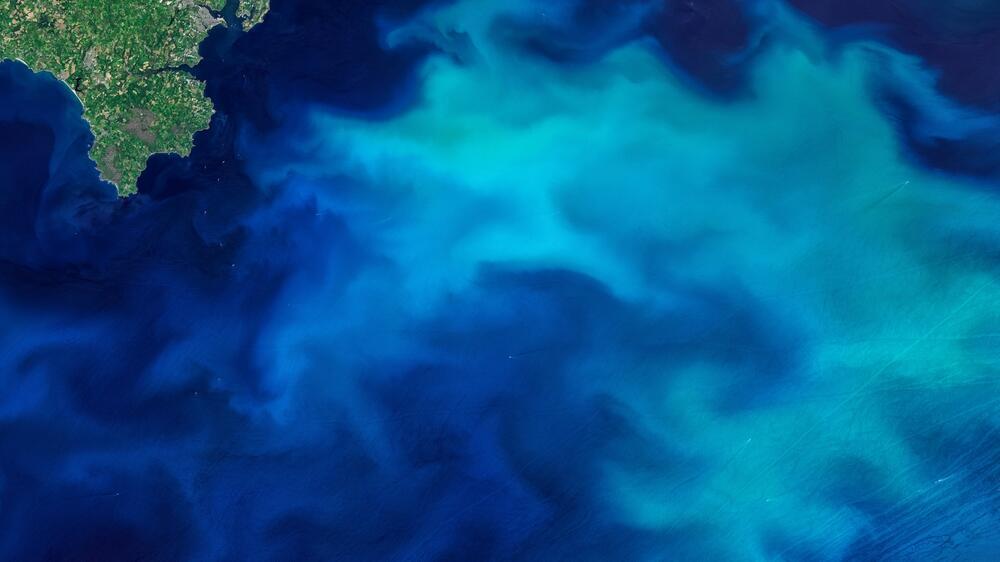The ocean’s color has significantly changed over the past 20 years, and the global trend is likely a result of climate change caused by human activities, a newly released study claims.
More stories:
The changes in the ocean's color over the last two decades can’t be explained solely by natural variations from year to year. These changes, although subtle to the human eye, have occurred in more than 56% of the world's oceans, which is a larger expanse than the entirety of the Earth’s land mass.
4 View gallery


Changes in the ocean's color as captured via a satellite
(Photo: NASA, Joshua Stevens)
The study’s research team, comprising scientists from the Massachusetts Institute of Technology, the University of Southampton’s National Oceanography Center, Oregon State University and the University of Maine, published their findings in the journal Nature.
Researchers found that tropical ocean areas near the equator have become greener over time, indicating that ecological systems within the ocean must also be changing, since the ocean's color reflects the organisms living within it.
In fact, researchers are confident that climate change caused by human activities is the driving factor behind these color changes.
"I've been running simulations that have been telling me for years that these changes in ocean color are going to happen,” said Dr. Stephanie Dutkiewicz, a senior researcher in MIT’s Center for Global Changes Science.
"To actually see it happening for real is not surprising, but frightening. And these changes are consistent with man-induced changes to our climate,” she added.
"This gives additional evidence of how human activities are affecting life on Earth over a huge spatial extent," said Dr. B. B. Cael from the University of Southampton’s National Oceanography Center.
4 View gallery


Greener waters indicate the presence of ecological systems, mainly phytoplankton
(Photo: Shutterstock)
The ocean’s color is a visual representation of everything present in its upper layers. Typically, deep blue waters reflect minimal life, while greener waters indicate the presence of ecological systems, mainly phytoplankton.
These phytoplanktons are a group of small photosynthetic organisms that include not only true plants but also algae, protists or bacteria with pigments. They’re abundant in the ocean’s upper layer and contain the green pigment chlorophyll.
The pigment assists phytoplankton in absorbing sunlight, which they use to capture carbon dioxide from the atmosphere and convert it into sugars. Phytoplankton forms the foundation of the marine food pyramid, sustaining more complex organisms, including krill, fish, seabirds and marine mammals.
Due to the phytoplankton's ability to capture and store carbon dioxide, the research team wanted to monitor phytoplankton across the oceans and observe how these vital communities respond to climate change.
To achieve this, they tracked changes in chlorophyll levels, based on the ratio of blue to green light reflected from the ocean's surface, which can be monitored from space.
Additionally, Professor Stephanie Henson from the University of Southampton’s National Oceanography Center, who took part in the study, published a separate study with other researchers showing that monitoring chlorophyll alone would require at least 30 years of continuous observation to identify any trends related to climate change.
This is because the large natural variability in chlorophyll from year to year would overshadow any anthropogenic influence on chlorophyll concentrations, making it necessary to observe the trends for several decades.
In 2019, Dutkiewicz and her colleagues published a separate study that showed the natural variability in ocean colors was much smaller than that of chlorophyll. Therefore, any signal of climate-induced changes needed to be more easily detectable amidst the smaller and more regular variations in other ocean colors.
Researchers predicted that such changes should become evident within 20 years of monitoring, in contrast to Henson's research.
In the current study, Cael and his team analyzed ocean color measurements using a Moderate Resolution Imaging Spectroradiometer (MODIS) instrument installed on the Aqua satellite, a multi-national research satellite operated by NASA that has been orbiting the Earth for 21 years.
The instrument provides moderate-resolution imagery of the Earth's surface and tracks ocean color changes over time.
In fact, the differences in color that the satellite collects, mainly when it is over the oceans - hence its name, are subtle and not discernible to the human eye. Much of the ocean may appear blue to us, while its true color may consist of a mixture of finer wavelengths, ranging from blue to green and even red.
Cael performed a statistical analysis of all seven ocean colors measured by the satellite from 2002 to 2022. He examined how the colors changed from region to region during a given year, providing him with insights into their natural variations. He then looked at how these annual color changes evolved over a period of two decades.
This analysis revealed a clear trend above the regular year-to-year color variability. To determine if this trend was related to climate change, he referred to Dutkiewicz's model from 2019.
The model simulated Earth's oceans under two scenarios: one with the addition of greenhouse gases and the other without them. The greenhouse gas scenario predicted a significant trend would appear within 20 years and cause changes in ocean color in nearly 50% of the world's ocean surface – a result nearly identical to the one shown from the satellite’s data analysis.
"This suggests that the trends we observe are not a random variation in the Earth's system. This is consistent with anthropogenic climate change." Cael said.
"The color of the oceans has changed," Dutkiewicz added. "And we can't say how. But we can say that changes in color reflect changes in plankton communities, which will impact everything that feeds on plankton. It will also change how much the ocean will take up carbon, because different types of plankton have different abilities to do that.”



